25 Essential Belgian Beers
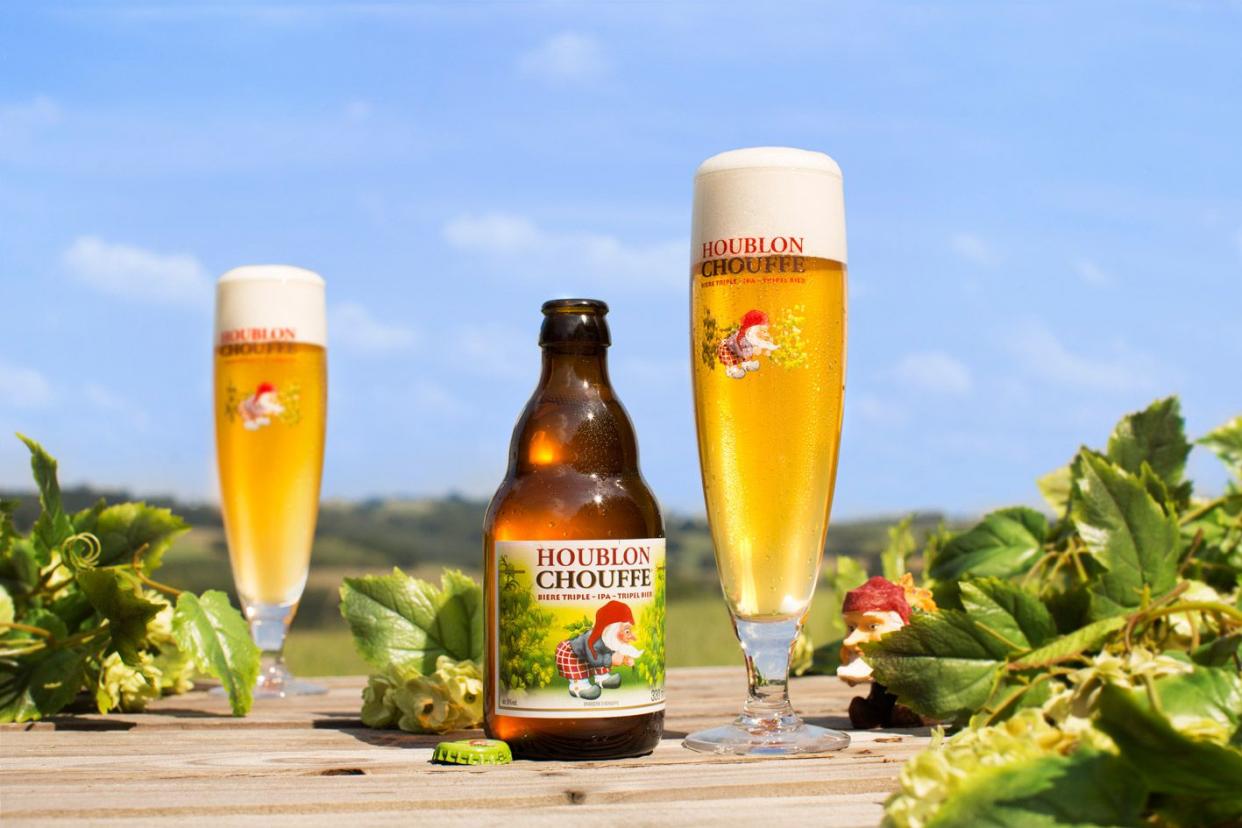
Though the U.S. is home to the world's most diverse beer culture, Belgium could be seen as the country with the most unique beer scene. Whereas other countries with rich brewing traditions saw their native styles spread across the world — German lagers took over the globe, and English pale ales influenced America's craft beer obsession in its early days — Belgian beer culture stayed insular, devoted to traditional methods and styles rarely seen outside of the small country.
In the past two decades, Americans have finally fully embraced what's been happening in Belgium; today, styles from abbey ales to gueuzes are brewed on American shores. Back in Belgium, much of the beer culture remains focused on time-tested brews. In selecting these 25 Belgian beers, we focused on acknowledging classics while touching on most of the country's homegrown styles. Hopefully, this list will give you a broad sense of great Belgian beers and leave you with plenty of things to try even if you're just hitting up your local beer shop. — Mike Pomranz
Cantillon Fou' Foune
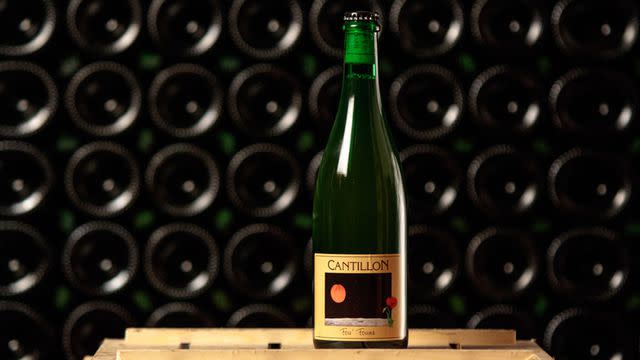
In the past two decades, this century-plus-old, fourth-generation-owned lambic specialist went from cult favorite to the producer of beers so renowned, scoring a taste outside of Belgium could feel impossible. If you ever do get your pick of the Cantillon litter, the Fou' Foune includes the delicious addition of Bergeron apricots without compromising any of the brewery's famed, cheek-puckering complexity.
Oude Gueuze Tilquin à L'Ancienne
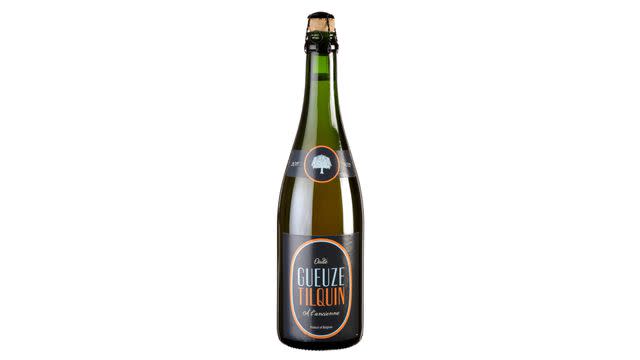
As Americans watched imports of Cantillon dry to a trickle, sour beer snobs had to look elsewhere for ultra-funky beer. Despite being a relatively new endeavor (it opened in 2009), founder/master blender Pierre Tilquin's eponymous gueuzerie checked a lot of the right boxes. Tilquin once worked for Cantillon and is the only blender in the world privy to working with that brewery's wort. Needless to say, the final results are a mouthful of unabashed acidic goodness.
Lindemans Gueuze Cuvée René
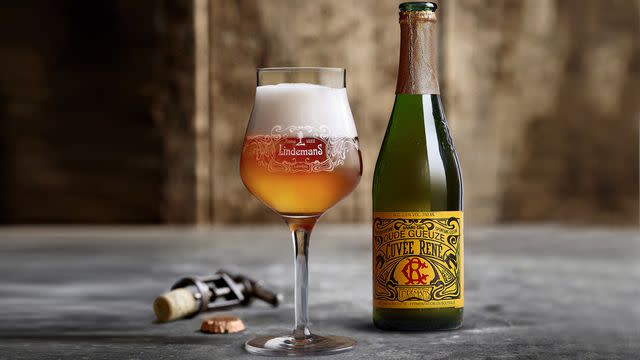
At more than 200 years old, Lindemans is one of the best-known Lambic producers in the world. Though brews like their popular Framboise may be a bit aggressively raspberry-forward for serious connoisseurs, their signature straight Lambic Cuvée René is a worthy drink for sour lovers at any level of sophistication.
Oude Geuze Boon Black Label
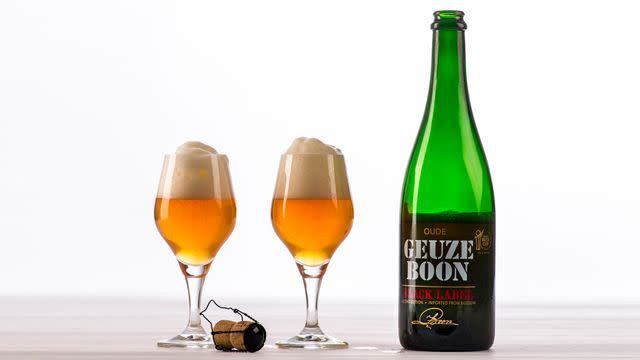
Though Oude Geuze Boon tends to fall on the more approachable side of this sour style's spectrum, the brand's Black Label bottling truly is a step above. The brewery says it chooses its "driest" lambics for this blend, and indeed, though this offering still maintains its drinkability, it has a bit more punch in its tartness and acidity.
Fonteinen Oude Kriek
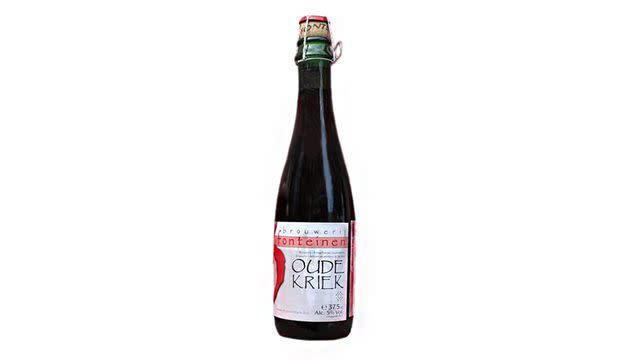
No Belgian beer list would be complete without a kriek — a sour Lambic beer spiked with sour cherries. Since the style inherently mixes sour with sour, getting everything to intermingle with a sense of complex harmony can be surprisingly tricky. However, Brouwerij Drie Fonteinen is an acclaimed lambic producer, and their take is spot on.
Rodenbach Alexander
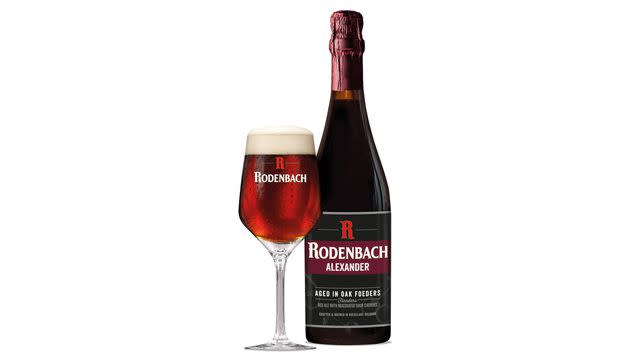
For 17 years, Alexander was just a legendary, practically-forgotten beer from Brouwerij Rodenbach, a Belgian brewer with plenty of well-known Flanders red-style brews under its belt. But in 2016 Rodenbach reintroduced this beautifully-packaged foederbier, matured with sour cherries, and reignited an appreciation of its delicate balance of sweet and sour from beer snobs everywhere.
Monk's Café Flemish Sour Ale
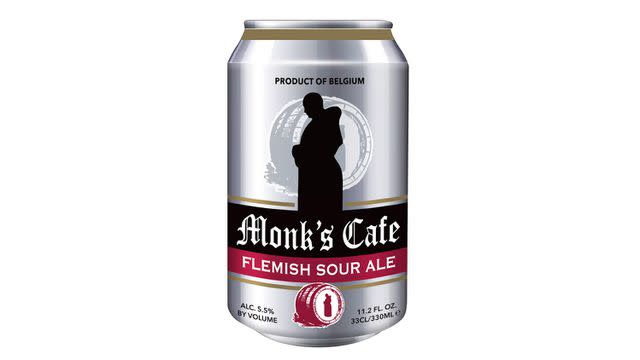
Tom Peters, owner of Monk's Café in Philadelphia, gets plenty of credit for being one of the first people to popularize Belgian sours in the United States, but what often gets overlooked is that Monk's has its own signature sour: Monk's Café Flemish Sour Ale — a sour brown brewed by Brouwerij Van Steenberge and hand-selected by Peters to bear his café's name. Granted, this brew isn't for everyone: It's an over-the-top mix of almost cola-like sweetness and practically vinegary sourness. Still, it's an unusual beer from a legendary spot that everyone should try.
Cuvée des Jacobins Rouge
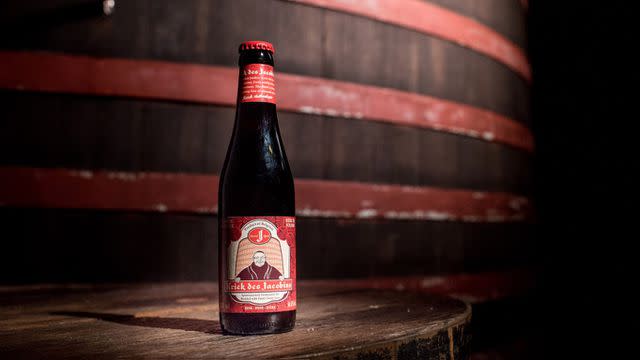
Though Rodenbach Alexander bursts with cherry flavors, and Monk's Café Flemish Sour has a unique backstory, drinkers seeking a truly classic Flemish sour ale needn't look any further than Cuvée de Jacobins Rouge. Since 1970, this pure foederbier, aged for at least 18 months, has been regarded as an example of how the tart and sweet balance of a Flanders red should be achieved.
Liefmans Goudenband
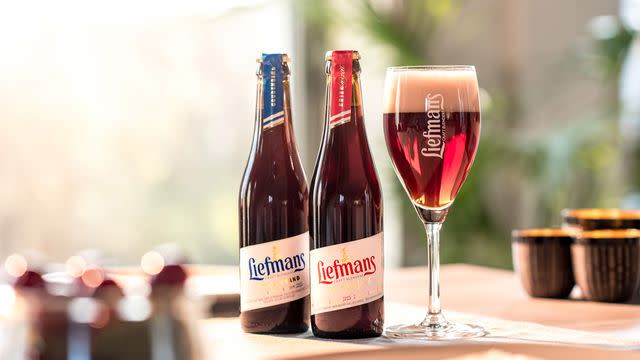
While many sours are known for their intensity, Liefmans Goudenband is an extremely approachable take on a Flanders oud bruin. The style's inherent tartness is balanced by the malty backbone. It's a classic sour brown without any gimmicks.
Saison Dupont
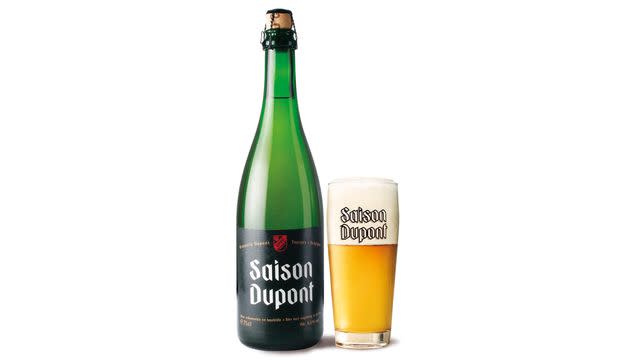
Long before multiple breweries opened on your block, each serving their own take on a farmhouse-style saison, Belgium's Brasserie Dupont held down the fort producing the most recognizable saison in the world. Though the competition has clearly intensified, Saison Dupont is still a standard bearer: It's fruity and spicy with a dry, rustic charm.
Fantôme Saison
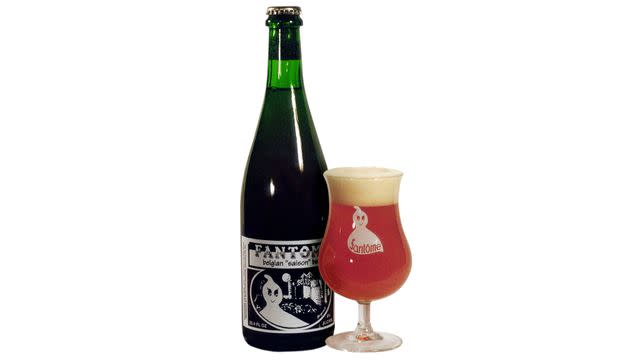
Whereas Saison Dupont may be the elder statesman, Brasserie Fantôme's Saison could be seen as the new classic. Since opening in 1988, this brewery has gained international acclaim, in part thanks to its uniquely juicy and complex flagship.
St. Bernardus Wit
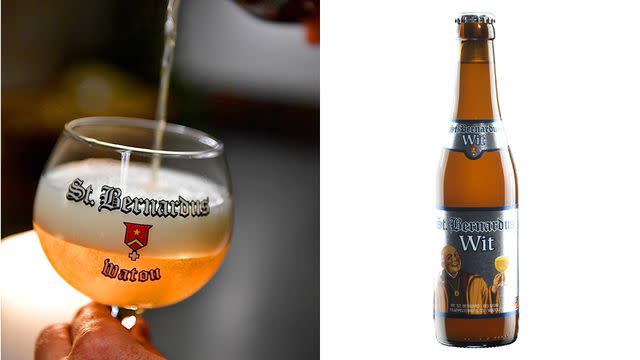
Americans are obsessed with Belgian-style wheat beers (see: $357 million worth of Blue Moon sold last year), meaning no list would be complete without at least one. Though St. Bernardus produces many acclaimed brews, their witbier is not only a surprisingly complex, tart take on the style, it also has an American connection: It was developed in collaboration Pierre Celis, the legendary brewer behind the seminal American wheat beer Celis White.
Brouwerij De Ranke XX Bitter
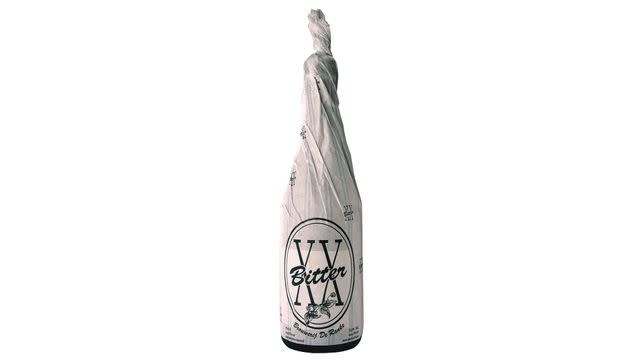
About a decade ago, American craft breweries entered a phase of making Belgian IPAs — essentially hoppy IPAs brewed with Belgian yeast. First brewed in 1996, XX Bitter — once referred to as "the most bitter beer in Belgium" — could be seen as an early precursor to this trend. Though the heavily hopped beer may seem unremarkable by modern standards, drinkers looking to touch on the classics need to give this brew a try.
Houblon Chouffe Dobbelen IPA Tripel
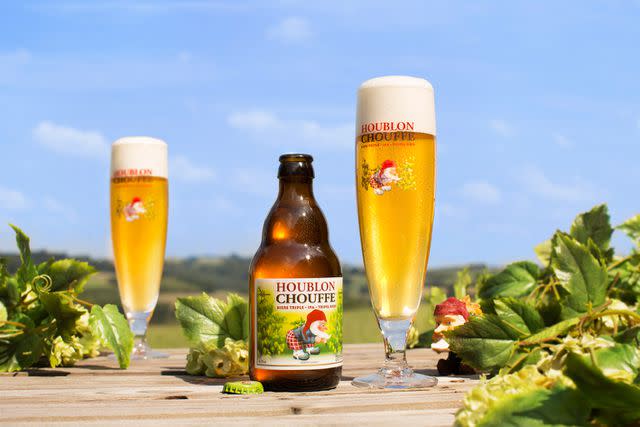
If Belgian IPAs are your cup of tea, you'll be hard-pressed to find a more classic and lauded example actually brewed in Belgium than Houblon Chouffee from Brasserie d'Achouffe. In 2006, the brewery applied American IPA sensibilities to a Belgian tripel and this nine-percent-alcohol monster — made with American hops — was the groundbreaking result.
Orval
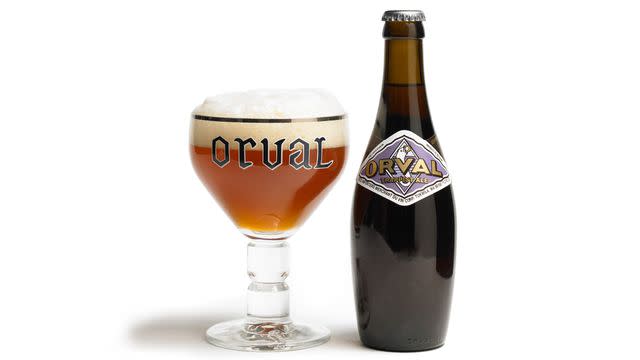
In many ways, Orval could be seen as the O.G. Brettanomyces beer. It wasn't the first brew to feature this funky yeast strain, but for many Americans, an Orval off the "imported" beer list was their first exposure to its unique flavor. More than eight decades after it was first introduced, Orval's deliciously dirty mix of citrus, bitter, and medicinal notes is still worth seeking out.
Petrus Aged Pale
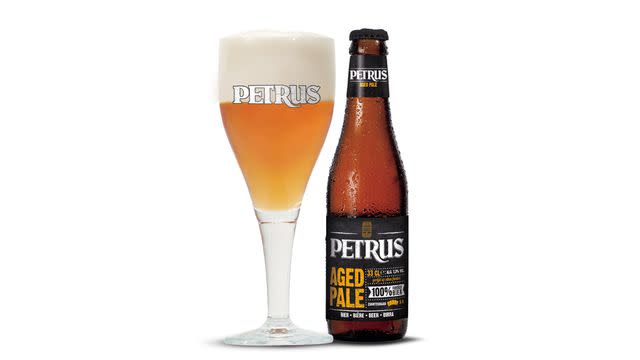
Few beers strike the ideal balance between sour and bitter like Petrus Aged Pale. Though pale in name, this beer — 100% of which is aged in giant oak barrels known as foeders — lands on the palate with a pucker-worthy tartness before giving way to an earthy, dry finish.
Duvel
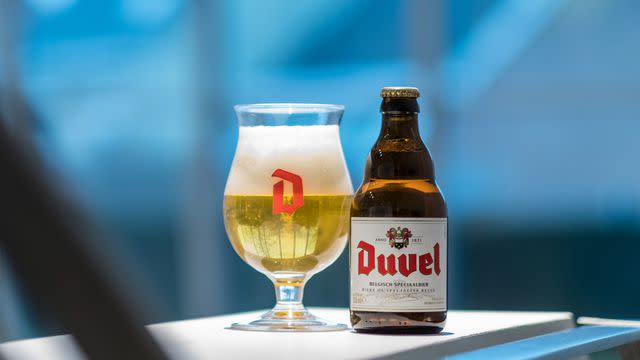
Not every occasion calls for an 8.5% ABV Belgian golden ale reeking of fruity esters and smacking of malty sweetness that resolves into spicy bitterness. But if you're pining for a classic Belgian golden ale and don't know where to start, cracking a Duvel is kind of like opening the book at page one.
De Dolle Arabier
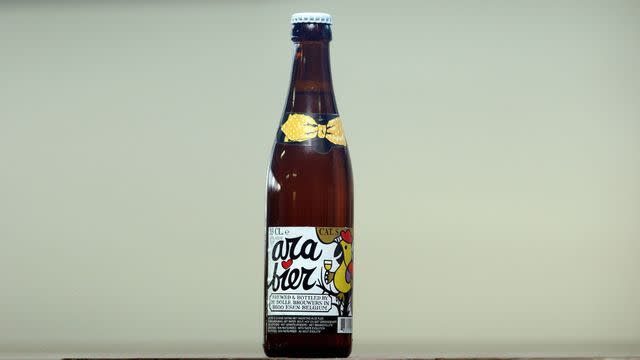
If you feel like you've drank Duvel to death, or if you'd rather support a brewery with a bit more of an independent streak, De Dolle Arabier is an equally big Belgian strong ale, but with a different character thanks to dry-hopping with Nugget hops and a funkier yeast strain.
De la Senne Taras Boulba
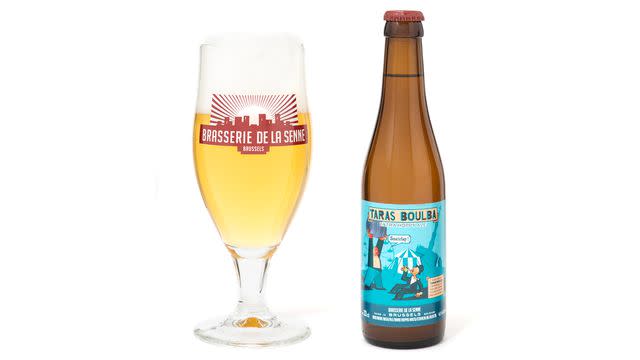
Not all Belgian brews have to be massive booze monsters. Taras Boulba is a light and hoppy session beer (only 4.5% alcohol) that offers up the ester-y and spicy yeast character you'd expect from a Belgian ale. It's a refreshing winner worth seeking out, especially if the rest of this list left you rolling your eyes.
Trappistes Rochefort 8
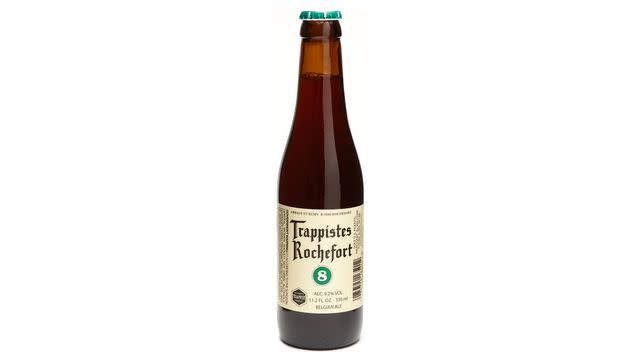
Many Trappist beers have a reputation for being a bit over the top, which is what makes a brew like Rochefort 8 so intriguing: Despite its deep golden brown color and slightly absurd 9.2% ABV, so much about this ale is delicate, particularly its fruit cocktail and brown sugar nose and flavors of fig and black cherry.
Chimay Grande Reserve
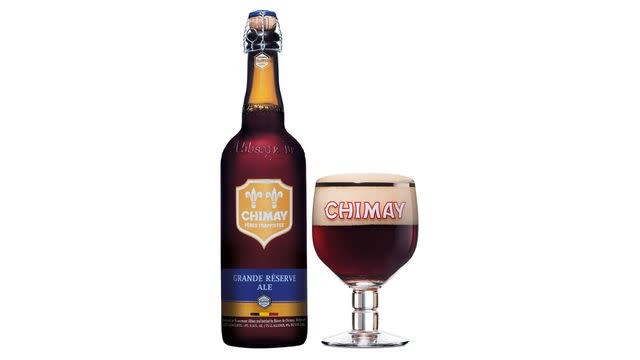
For many Americans, Chimay was an introduction to Belgian beer. Back before craft beer completely took hold in America, this readily-available brand carried an air of sophistication most domestic beer brands couldn't muster. But even today, the liquid inside is as delicious as ever. The Grande Reserve, colloquially referred to as "Chimay blue," is especially memorable, a dark brown beauty packed with dried fruit flavors.
Westmalle Tripel
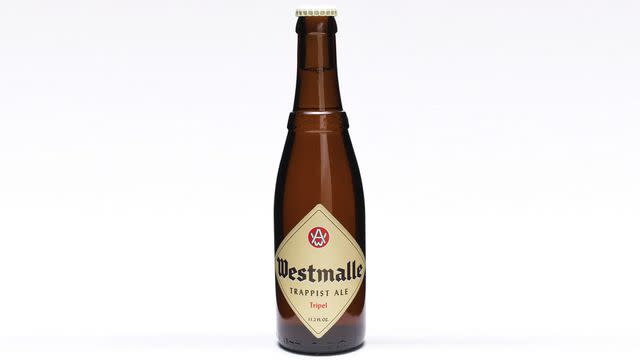
Though this list skews sour, many of Belgium's classic beers fall into a trio of styles: dubbel, tripel, and quad — three types of abbey ales that have been brewed for generations. Dubbed the "mother of all tripels," Westmalle's take on this fruity, golden style — the lightest in color of the three – is brewed from a recipe that the abbey says hasn't changed since 1956. It's as classic a tripel as you'll find.
Westvleteren 12
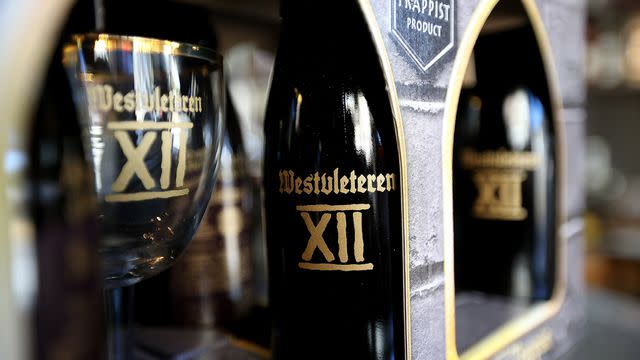
For years, this rich Belgian quad has been called one of the best beers, if not the best beer, in the world. Whether this acclaim is the result of the beer's quality (it's rich, with intense notes of toffee and dark fruit) or rarity (it's very hard to get) is up for some debate. Your best bet is to hunt one down and try it yourself. Finding a bottle is half the experience.
Deus
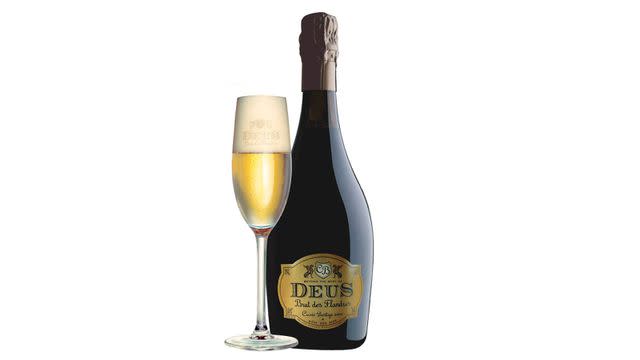
Miller High Life may have a trademark on the term "The Champagne of Beers," but in the past decade-plus, beers meant to actually mimic some of the sophistication of Champagne have become a style all their own, known as biere brut or biere de Champagne. Deus, which is probably the best-known example, is finished in the Champagne region of France, and the result is fittingly pale and bone dry, despite retaining much of a Belgian beer's funky character.
De Struise Brouwers Black Albert
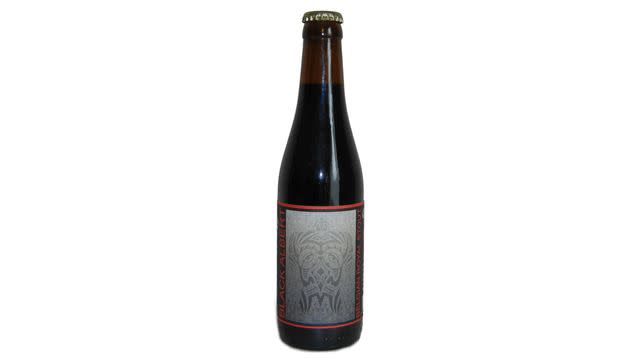
Though Russian Imperial Stout is a style not commonly associated with Belgium, this monstrous, 13% alcohol beer belongs in any discussion about the world's best stouts.
For more Food & Wine news, make sure to sign up for our newsletter!
Read the original article on Food & Wine.

